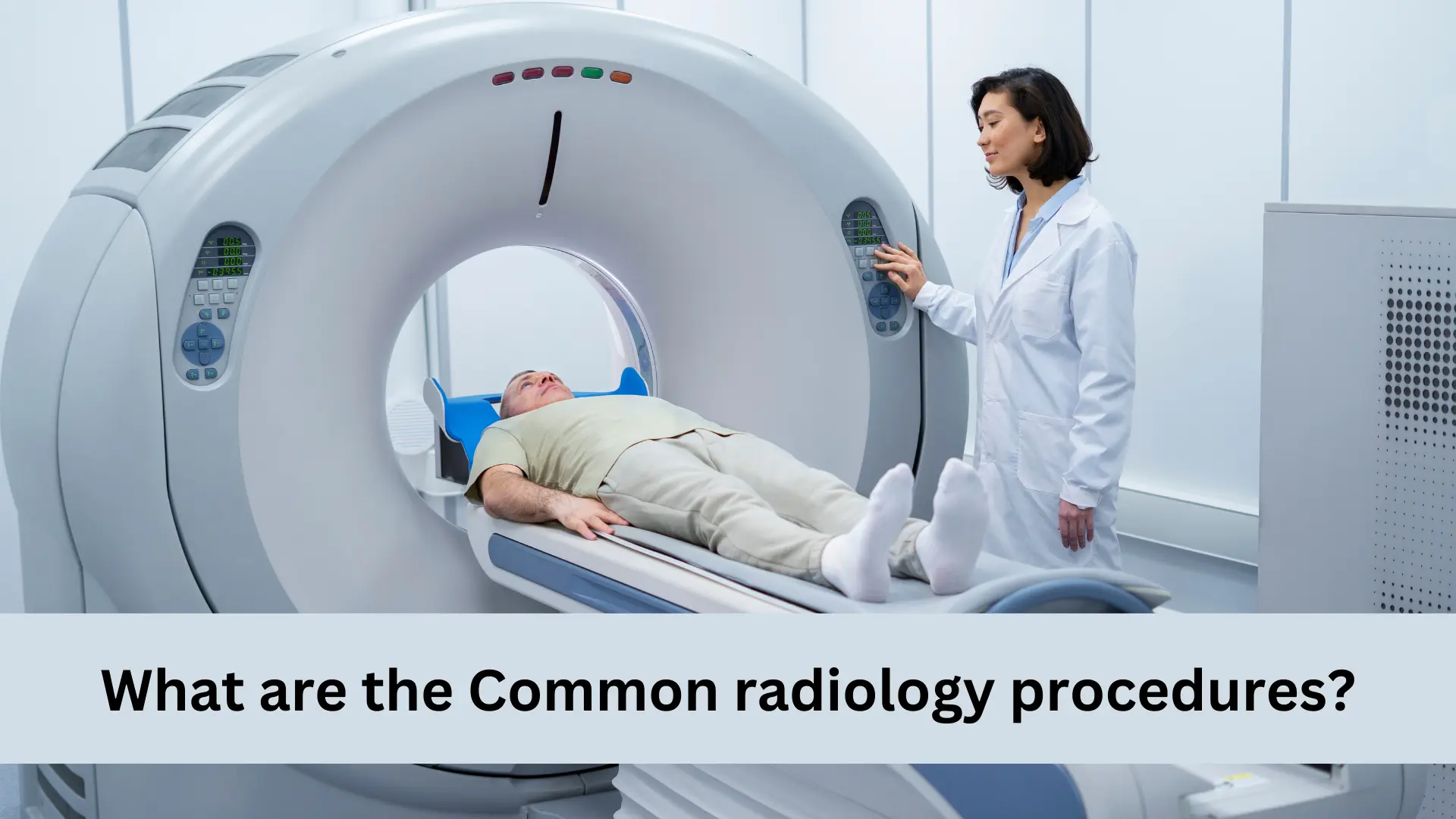Radiology plays a crucial role in modern medicine by enabling healthcare providers to obtain detailed images of the body's internal structures. These images are invaluable for diagnosing diseases, monitoring treatment progress, and guiding various medical interventions.
Radiological procedures are broadly categorized into two main types: diagnostic radiology and interventional radiology. Diagnostic radiology involves creating images to diagnose medical conditions, while interventional radiology uses imaging guidance to perform minimally invasive treatments.
Common Diagnostic Radiology Procedures
1. X-ray (Radiography)
Types: Standard X-ray, fluoroscopy
Uses: X-rays are commonly used to examine bones, lungs, and the digestive system. Fluoroscopy, a real-time form of X-ray, is used for procedures like barium enemas and joint injections.
Procedure: Patients are exposed to a controlled dose of ionizing radiation, and an image is captured on film or electronically. It's a quick and painless procedure.
2. Computed Tomography (CT)
Types: Conventional CT, CT angiography
Uses: CT scans provide detailed cross-sectional images of the body, making them useful for diagnosing various conditions, including cancer, trauma, and vascular disorders.
Procedure: The patient lies on a table that moves through a doughnut-shaped CT scanner. Multiple X-ray beams create detailed cross-sectional images.
3. Magnetic Resonance Imaging (MRI)
Types: MRI with contrast, functional MRI (fMRI)
Uses: MRI is excellent for visualizing soft tissues like the brain, muscles, and organs. It's used for diagnosing conditions such as tumors, joint problems, and neurological disorders.
Procedure: Patients lie inside a large magnet, and radio waves create detailed images based on the body's response to magnetic fields. It's non-invasive and doesn't involve radiation.
4. Ultrasound
Types: 2D ultrasound, Doppler ultrasound
Uses: Ultrasound is widely used for imaging fetuses during pregnancy, assessing blood flow, and examining various organs.
Procedure: A transducer is placed on the skin, and high-frequency sound waves create images of the body's internal structures. It's painless and radiation-free.
5. Nuclear Medicine
Types: Single-photon emission computed tomography (SPECT), positron emission tomography (PET)
Uses: Nuclear medicine involves the use of radioactive materials to diagnose and treat various diseases, including cancer and heart conditions.
Procedure: Patients receive a small amount of a radioactive substance, and a gamma camera or PET scanner is used to capture images of the distribution of the radioactive material in the body.

Common Interventional Radiology Procedures
1. Angiography
Uses: Angiography is used to visualize blood vessels and arteries. It can diagnose conditions like atherosclerosis and aneurysms and guide treatments like angioplasty.
Procedure: A contrast dye is injected into the blood vessels, and X-ray imaging is used to capture real-time images of blood flow.
2. Biopsy
Uses: Biopsies are performed to obtain tissue samples for analysis. They can help diagnose cancer, infection, and other diseases.
Procedure: A needle is guided to the target tissue using imaging, and a small sample is collected for analysis.
3. Embolization
Uses: Embolization is used to block blood vessels and control bleeding. It's also employed in the treatment of certain tumors.
Procedure: A catheter is inserted into the blood vessel, and tiny particles or coils are placed to block the blood flow.
4. Drainage Procedures
Uses: These procedures involve draining fluid collections, such as abscesses or cysts.
Procedure: A catheter is inserted into the fluid collection under imaging guidance to remove the fluid.
5. Radiofrequency Ablation (RFA)
Uses: RFA is used to treat certain tumors, especially in the liver, by heating and destroying the cancerous tissue.
Procedure: A needle electrode is guided to the tumor using imaging, and radiofrequency energy is used to heat and destroy the tumor.
Safety and Precautions
Radiological procedures involve the use of ionizing radiation in some cases, so it's essential to minimize the radiation exposure to patients. Radiologists and technologists follow strict safety protocols to ensure patient safety. Patients who are pregnant or may be pregnant are typically advised to avoid radiation-based procedures when possible.
Conclusion
Radiology procedures are invaluable tools in modern medicine, allowing healthcare professionals to visualize the human body's internal structures for diagnostic and interventional purposes. Understanding the different types, uses, and procedures involved in radiology is crucial for patients and healthcare providers alike. These procedures continue to evolve with advances in technology, ensuring that radiology remains a cornerstone of modern healthcare.
In this blog, we've explored common radiology procedures, including diagnostic and interventional techniques, and discussed their uses and procedures. Whether it's a simple X-ray to assess a fracture or a complex angiography to study blood vessels, radiology procedures play a critical role in improving patient care and outcomes.
For more information on specific radiology procedures or to discuss any concerns you may have, it's best to consult with your healthcare provider or a qualified radiologist. Remember that your health is a priority, and radiology is here to help ensure you receive the best possible care.
Related Post Articles:
1. How AI is being used to improve the accuracy and efficiency of medical imaging?
.webp)














